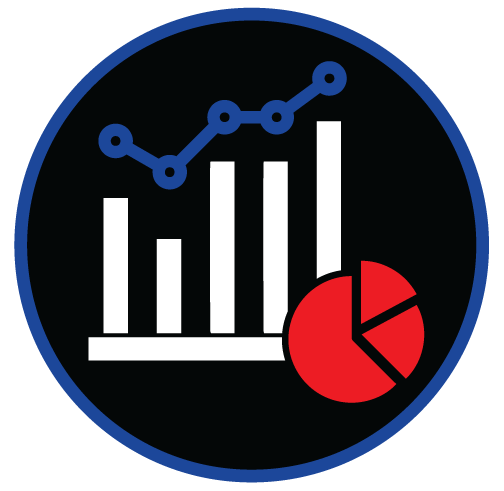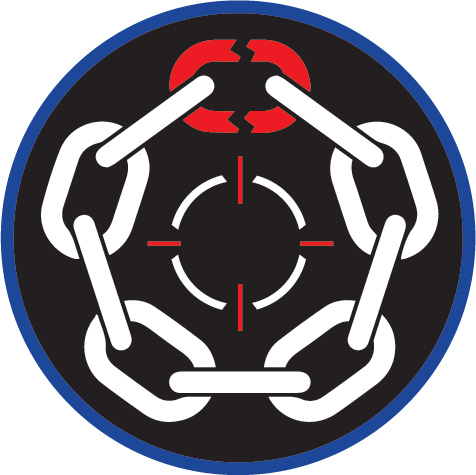

Ransomware Intelligence Repository: A Critical Asset for Proactive Cyber Risk Management
Uncover Evolving Threats, Strengthen Defenses, and Mitigate Risks
This comprehensive ransomware intelligence repository provides vital insights into various ransomware groups' activities, events, and attack patterns. This resource empowers organizations to enhance their External Attack Surface Management by identifying vulnerabilities commonly targeted by ransomware actors. It bolsters Digital Risk Protection efforts by understanding evolving tactics and communication channels across multiple groups. It also helps improve Security Ratings by demonstrating proactive risk mitigation and strengthens Third-Party Risk Management by evaluating vendor exposure to a broader range of ransomware threats.
Click Here for a complete list of Ransomware Groups ThreartNG actively monitors.
Transform Ransomware Intelligence into Proactive Defense: Early Warnings, Targeted Mitigation, and Enhanced Security
Proactive Threat Intelligence
Gain early warnings of potential ransomware attacks from various groups, providing a sense of security and enabling pre-emptive security measures, reducing the likelihood of successful breaches.
Targeted Risk Mitigation
Identify and address vulnerabilities in your external attack surface and third-party ecosystem that are commonly exploited by ransomware actors.
Improved Security Posture
Leverage ransomware intelligence to continuously enhance your defenses and resilience against various threats, demonstrating a commitment to proactive security.

Ransomware Chatter Frequency: A Critical Indicator of Cyber Risk
Understanding the Impact of Mentions on Security Posture
A high frequency of mentions of an organization by ransomware groups indicates a heightened level of interest and potential targeting, signaling an elevated risk across various security domains. An external attack surface management perspective suggests increased scrutiny of the organization's vulnerabilities, necessitating a proactive approach to identify and remediate weaknesses. It underscores the need for enhanced monitoring and threat intelligence to detect and mitigate potential attacks in terms of digital risk protection. For security ratings, frequent mentions can negatively impact scores, highlighting the organization's elevated risk profile. In third-party risk management, a thorough evaluation of vendor relationships is necessary to ensure they are not exposing the organization to additional vulnerabilities. Conversely, a low frequency of mentions signifies a lower perceived risk but should not lead to complacency.
High Frequency
Increased likelihood of targeted attacks
Prioritize vulnerability assessments and patching
Enhance threat monitoring and incident response capabilities
Potential negative impact on security ratings
Scrutinize third-party relationships for vulnerabilities
Low Frequency
Lower perceived risk, but not an absence of risk
Maintain proactive security measures
Continue monitoring for potential threats
Opportunity to improve security ratings
Leverage positive security posture in vendor assessments

Actionable Ransomware Insights: Enhance Vulnerability Management, Digital Risk Protection, and Security Ratings
External Attack Surface Management (EASM)
Targeted Vulnerability Assessment: The combination of ransomware group identification and mention context allows organizations to focus their vulnerability assessments on areas most likely targeted by specific threat actors.
Prioritization of Remediation Efforts: The frequency of mentions can help prioritize patching and remediation efforts based on the level of interest from different ransomware groups.
Proactive Defense: The offline screenshots provide concrete evidence of potential threats, enabling organizations to proactively address vulnerabilities and strengthen their defenses before exploiting them.
Digital Risk Protection (DRP)
Enhanced Threat Intelligence: The repository provides valuable insights into the tactics, techniques, and procedures (TTPs) of various ransomware groups, enabling organizations to understand better and anticipate their actions.
Continuous Monitoring: The frequency of mentions serves as an early warning system, allowing organizations to detect and respond to potential threats.
Reputation Management: The sanitized screenshots can be used to address any negative publicity or misinformation related to the organization's security posture.
Security Ratings
Improved Risk Assessment: The repository's data can be used to enhance the accuracy and granularity of security ratings, providing a more comprehensive view of an organization's risk profile.
Demonstrated Security Posture: Organizations can leverage the intelligence to demonstrate their proactive approach to security and risk management, potentially improving their security ratings.
Competitive Advantage: A strong security rating, supported by evidence of active threat monitoring and mitigation, can provide a competitive advantage in the marketplace.

Beyond Cyber Defense: Ransomware Intelligence for Brand Protection, Cloud Security, and Due Diligence
Brand Protection
Early Detection of Brand Abuse: Identify instances where the organization's brand is mentioned in ransomware group communications. This could potentially signal attempts at phishing, impersonation, or other malicious activities aimed at harming the brand's reputation.
Proactive Reputation Management: The sanitized screenshots provide evidence for addressing any negative publicity or misinformation related to the organization's brand concerning ransomware threats.
Enhanced Brand Monitoring: Gain deeper insights into how the organization's brand is perceived and discussed in the cybercriminal underground, enabling proactive measures to protect and enhance brand image.
Cloud & SaaS Exposure Management
Identification of Cloud and SaaS Risks: Look for mentions of an organization in ransomware group communications, which could indicate potential vulnerabilities or misconfigurations that could be exploited.
Prioritized Remediation: The frequency of mentions can help prioritize remediation efforts for cloud and SaaS vulnerabilities based on the level of interest from different ransomware groups.
Strengthened Cloud Security Posture: Proactively address weaknesses in cloud and SaaS environments to prevent ransomware attacks and protect sensitive data.
Due Diligence
Enhanced Risk Assessment: During mergers, acquisitions, or partnerships, the repository provides valuable insights into the target organization's potential exposure to ransomware threats, aiding in a more thorough risk assessment.
Informed Decision-Making: The intelligence can inform decision-making during due diligence processes, ensuring that any potential risks associated with ransomware are considered.
Negotiation Leverage: The information can be used to negotiate better terms or request remediation actions from the target organization before finalizing any agreements.
Third-Party Risk Management
Vendor Risk Assessment: Evaluate the security posture of third-party vendors by identifying any mentions of them in ransomware group communications, indicating potential vulnerabilities or risks they may introduce to the organization.
Prioritized Vendor Management: The frequency of mentions can help prioritize vendor risk management efforts based on the level of interest from different ransomware groups.
Strengthened Supply Chain Security: Proactively address risks within the supply chain by working with vendors to remediate vulnerabilities and improve their security posture.
DarCache Dark Web: Data and information gathered from the dark web, a part of the internet not indexed by search engines and can only be accessed using specialized software.
DarCache ESG: Data and information gathered to support the analysis and evaluation of companies and other organizations' Environmental, Social, and Governance performance.
DarCache Rupture: A database of usernames, emails, and organizations that have been compromised in data breaches or other security incidents.
DarCache Vulnerability: Data and information gathered to support the analysis and tracking of known vulnerabilities and potential vulnerabilities in software, systems, and network infrastructure.
DarCache Mobile: Intelligence repository of mobile apps identifying exposed sensitive information such as authentication tokens, API keys, and private keys, helping organizations strengthen their security posture and reduce digital risk.
DarCache Bug Bounty: In-depth insight into worldwide bug bounty initiatives enables organizations to proactively use crowdsourced security research data to discover and address vulnerabilities.
DarCache 8-K: Leverage a unique collection of cybersecurity incident disclosures from publicly traded companies to proactively identify and mitigate threats, enhance your security posture, and gain a competitive edge across your external attack surface, digital risk protection, and security ratings initiatives.
DarCache Bank Identification Numbers (BIN): A database of essential information related to Bank Identification Numbers (BINs) used in financial transactions worldwide.


















